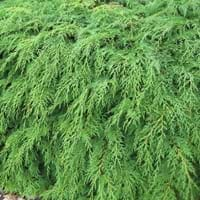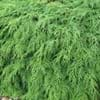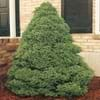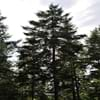Life Span
Perennial
Annual
Type
Needled or Scaled Evergreen
Needled or Scaled Evergreen
Origin
Russia/Siberia
Western United States, Canada
Types
Not available
Eastern white spruce
Black Hills white spruce
Alberta white spruce
Alaska white spruce
Number of Varieties
Not Available
Habitat
Cold Regions
gardens, Grassland, Hillside, Woods
USDA Hardiness Zone
4-7
2-7
Sunset Zone
A3, 1a, 1b, 2a, 2b, 3a, 3b, 4, 5, 6, 7, 8, 9, 10, 14, 15, 16, 17
A1, A2, A3, 1a, 1b, 2a, 2b, 3a, 3b, 4, 5, 6, 7, 14, 15, 16, 17
Habit
Spreading
Pyramidal
Flower Color
Dark Green
Peach, Pink
Flower Color Modifier
Bicolor
Bicolor
Fruit Color
Non Fruiting Plant
Tan
Leaf Color in Spring
Green
Light Green, Gray Green
Leaf Color in Summer
Green, Dark Green
Green, Gray Green
Leaf Color in Fall
Green, Dark Green, Copper
Green, Gray Green
Leaf Color in Winter
Purple, Sienna, Burgundy, Bronze
Green, Gray Green
Leaf Shape
Scale-like imbricate
Cylindrical
Plant Season
Spring, Summer, Fall, Winter
Spring, Summer, Fall, Winter
Sunlight
Full Sun, Partial Sun, Partial shade
Full Sun, Partial Sun
Type of Soil
Clay, Loam
Loam
The pH of Soil
Acidic, Neutral
Acidic, Neutral
Soil Drainage
Well drained
Average
Bloom Time
Not Available
Early Spring, Late Spring
Tolerances
Shade areas
Drought
Where to Plant?
Ground
Container, Ground, Pot
How to Plant?
Seedlings, Semi-hardwood cuttings
Seedlings
Plant Maintenance
Low
Medium
Watering Requirements
Water during dry weather, Water occasionally
Average Water Needs, It cannot sustain wet-feet, Keep the ground moist but not water-logged, Requires watering in the growing season
In Summer
Lots of watering
Lots of watering
In Spring
Moderate
Moderate
In Winter
Average Water
Average Water
Soil pH
Acidic, Neutral
Acidic, Neutral
Soil Type
Clay, Loam
Loam
Soil Drainage Capacity
Well drained
Average
Sun Exposure
Full Sun, Partial Sun, Partial shade
Full Sun, Partial Sun
Pruning
Remove damaged leaves, Remove dead branches, Remove dead leaves
Prune to stimulate growth, Prune twice a year, Remove hanging branches, Remove old, faded fronds
Fertilizers
slow-release fertilizers
All-Purpose Liquid Fertilizer
Pests and Diseases
No serious insect or disease problems
Red blotch
Plant Tolerance
Shade areas
Drought
Flowers
Insignificant
Insignificant
Flower Petal Number
Single
Single
Foliage Texture
Fine
Fine
Foliage Sheen
Matte
Glossy
Attracts
Bees, Butterflies, Hummingbirds
Birds
Allergy
Not Available
Skin irritation
Aesthetic Uses
Cottage Garden, Ground Cover
Showy Purposes
Beauty Benefits
Not Available
Not Available
Environmental Uses
Not Available
Air purification
Medicinal Uses
Not Available
Not Available
Part of Plant Used
Not Available
Whole plant
Other Uses
Used for bedding in gardens
Used in Furniture
Used As Indoor Plant
No
No
Used As Outdoor Plant
Yes
Yes
Garden Design
Alpine, Edging, Feature Plant, Foundation, Groundcover, Mixed Border, Rock Garden, Wall
Feature Plant, Screening, Wind Break
Botanical Name
MICROBIOTA decussata
PICEA glauca var. albertiana
Common Name
Microbiota, Siberian carpet cypress, Russian arbor vitae
White Spruce
In Hindi
माइक्रोबायोटा
अलबर्टा सजाना
In German
Mikrobiota
Alberta Fichte
In French
microbiote
épinette de l'Alberta
In Spanish
microbiota
Alberta abeto
In Greek
μικροχλωρίδας
Αλμπέρτα ερυθρελάτης
In Portuguese
microbiota
Alberta abeto
In Polish
mikroflory
Alberta świerk
In Latin
Microbiota
Alberta abiegnis
Phylum
Tracheophyta
Not Available
Class
Pinopsida
Not Available
Order
Pinales
Not Available
Family
Cupressaceae
Pinaceae
Clade
Not Available
Not Available
Tribe
Not Available
Not Available
Subfamily
Not Available
Piceoideae Frankis
Number of Species
Not Available
Importance of Microbiota and Alberta Spruce
Want to have the most appropriate plant for your garden? You might want to know the importance of Microbiota and Alberta Spruce. Basically, these two plants vary in many aspects. Compare Microbiota and Alberta Spruce as they differ in many characteristics such as their life, care, benefits, facts, etc. Every gardener must at least have the slightest clue about the plants he wants to plant in his garden. Compare their benefits, which differ in many ways like facts and uses. The medicinal use of Microbiota is Not Available whereas of Alberta Spruce is Not Available. Microbiota has beauty benefits as follows: Not Available while Alberta Spruce has beauty benefits as follows: Not Available.
Compare Facts of Microbiota vs Alberta Spruce
How to choose the best garden plant for your garden depending upon its facts? Here garden plant comparison will help you to solve this query. Compare the facts of Microbiota vs Alberta Spruce and know which one to choose. As garden plants have benefits and other uses, allergy is also a major drawback of plants for some people. Allergic reactions of Microbiota are Not Available whereas of Alberta Spruce have Skin irritation respectively. Having a fruit bearing plant in your garden can be a plus point of your garden. Microbiota has no showy fruits and Alberta Spruce has no showy fruits. Also Microbiota is not flowering and Alberta Spruce is not flowering . You can compare Microbiota and Alberta Spruce facts and facts of other plants too.





